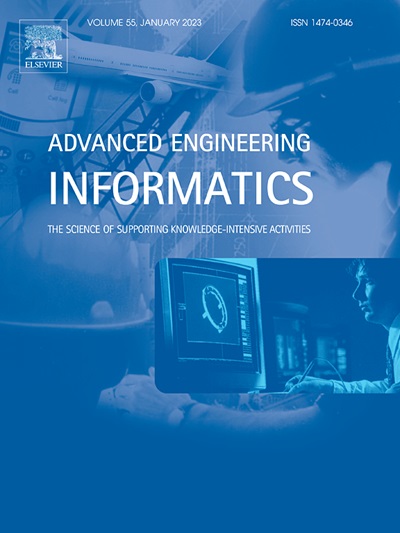A semantics-driven framework to enable demand flexibility control applications in real buildings
IF 8
1区 工程技术
Q1 COMPUTER SCIENCE, ARTIFICIAL INTELLIGENCE
引用次数: 0
Abstract
Decarbonising and digitalising the energy sector requires scalable and interoperable Demand Flexibility (DF) applications. Semantic models are promising technologies for achieving these goals, but existing studies focused on DF applications exhibit limitations. These include dependence on bespoke ontologies, lack of computational methods to generate semantic models, ineffective temporal data management and absence of platforms that use these models to easily develop, configure and deploy controls in real buildings. This paper introduces a semantics-driven framework to enable DF control applications in real buildings. The framework supports the generation of semantic models that adhere to Brick and SAREF while using metadata from Building Information Models (BIM) and Building Automation Systems (BAS). The work also introduces a web platform that leverages these models and an actor and microservices architecture to streamline the development, configuration and deployment of DF controls. The paper demonstrates the framework through a case study, illustrating its ability to integrate diverse data sources, execute DF actuation in a real building, and promote modularity for easy reuse, extension, and customisation of applications. The paper also discusses the alignment between Brick and SAREF, the value of leveraging BIM data sources, and the framework’s benefits over existing approaches, demonstrating a 75% reduction in effort for developing, configuring, and deploying building controls.
求助全文
约1分钟内获得全文
求助全文
来源期刊

Advanced Engineering Informatics
工程技术-工程:综合
CiteScore
12.40
自引率
18.20%
发文量
292
审稿时长
45 days
期刊介绍:
Advanced Engineering Informatics is an international Journal that solicits research papers with an emphasis on 'knowledge' and 'engineering applications'. The Journal seeks original papers that report progress in applying methods of engineering informatics. These papers should have engineering relevance and help provide a scientific base for more reliable, spontaneous, and creative engineering decision-making. Additionally, papers should demonstrate the science of supporting knowledge-intensive engineering tasks and validate the generality, power, and scalability of new methods through rigorous evaluation, preferably both qualitatively and quantitatively. Abstracting and indexing for Advanced Engineering Informatics include Science Citation Index Expanded, Scopus and INSPEC.
 求助内容:
求助内容: 应助结果提醒方式:
应助结果提醒方式:


